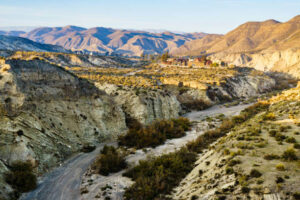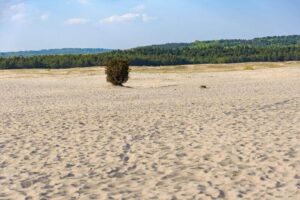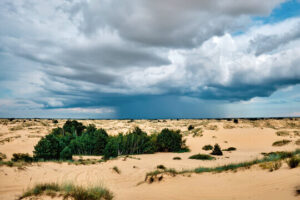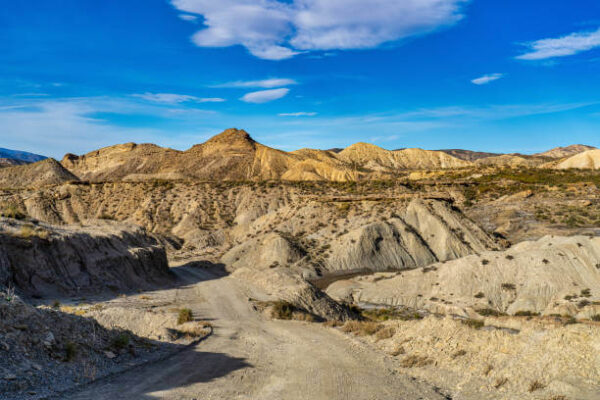Introduction
Why are there no deserts in Europe? A lot of people have this question. Let’s play trivia, shall we? What springs to your mind when somebody mentions old towns and medieval architecture? Europe, for sure. And what about fabulous cuisine? Well, Europe again. Culture? – Europe. History? – Europe. Mountains and moody weather? – Europe. But… Are there any deserts in Europe? – No, No, No. That’s the last thing we think of Europe, mainly because our imagination of desert is so strongly linked to those images of Sahara or Gobi desert dunes (of ones like the Microsoft uses as their screensaver, you know what we mean, right?), that it’s practically impossible to imagine Europe having the one.
But it’s not entirely our fault, is it? Even some geographies and trivia factoids can’t conclude whether Europe features real deserts or not. Some believe Europe is the only continent without a desert, while others believe that several semi-deserts and badlands in Spain, Poland, or Serbia can qualify as deserts. Which is the biggest desert in Europe? We are going to cover all of that.
And while arguing whether they can be considered deserts or not isn’t the topic of this article, we decided to bring you the list of Europe’s most popular desert-like areas. How many deserts in Europe? We are going to answer all these questions in this articles. Arousing the sense of floating within the endless waves of sand and dunes giving you timid exposure to nature’s alter-ego, something very different from windhewn mountain ranges, green meadows, and narrowly-dotted forests. And if you think that these deserts are nothing compared to those African and Asian juggernauts, well, at least they are trying their best. This is our deserts in Europe list.
So, let’s get started.
Tabernas Desert, Spain


The Tabernas Desert formed millions of years ago through sedimentary deposits, and it has been shaped by constant erosion over time. This process created many remarkable landforms, including dunes, rocky plateaus, ravines, canyons, creeks, and ponds. Its terrain also consists of soil rich in nutrients from nearby mountain ranges, which have helped sustain plant life despite its arid climate.
This area is home to various wildlife, including guardabarranco lark birds, eagles, lizards, and foxes. It’s also known for its population of feral horses that roam freely throughout the desert. Years ago, these horses were brought to this region by shepherds who traveled from North Africa to pasture their flocks on the land here.
The Tabernas Desert is a unique natural wonder and a famous filming location for movies such as Lawrence of Arabia, Indiana Jones, and The Last Crusade, making it one of the most famous deserts in Europe. Its dramatic scenery provides filmmakers with an authentic backdrop for their stories that can’t be found anywhere else in Europe or the world.
Overall, the Tabernas Desert in Spain is an incredible destination that offers visitors a unique experience unlike elsewhere in Europe. From its stunning landscapes to its vibrant wildlife population, this area truly has something for everyone – making it one of the unique places you can visit on our continent!
The Accona Desert, Italy
The Accona Desert spans is one of the most famous deserts in Europe and is nearly 11,000 hectares and is located in central Tuscany near Siena. Expansive fields of sand and gravel stretch as far as the eye can see, making it one of the biggest deserts in Europe. While it may not seem ideal for humans due to its dryness and arid climate, the Accona Desert has been home to many settlers throughout its long history.
Today, despite its hostile environment, visitors can find some respite while exploring this magical desert scape. In addition to archaeological sites such as tombs dating back thousands of years, there are also plenty of trails suited for hikers looking for adventure or relaxation amongst nature’s beauty. Some say you can even hear ancient echoes from past forgotten battles if you listen carefully enough!
If you’re looking for a truly unique experience on your trip to Italy, look no further than Accona Desert, an oasis amidst an otherwise unforgiving terrain that carries centuries’ worth of stories waiting to be told beneath its golden sands. It is one of the biggest deserts in Europe map.
Bledow Desert, Poland


Before visiting Europe, make sure to check all the new travel regulations. Launching in November 2025, ETIAS will bring more flexibility and comfort to the traveler experience thanks to the highly developed pre-arrival verification system and reduced waiting time at the EU border.
Welcome to the new age, where visiting Europe with just a biometric passport and a pre-issued digital travel permit is a reality.
Visiting this magical landscape is an unforgettable experience for any traveler looking for something different. Walking along the undulating terrain gives you an insight into how nature sculpted this place over time. Not only can you admire how the wind has created mesmerizing swirls on the sandy soil, but also how rain occasionally transforms this area into a beautiful lake covered with yellow water lilies after heavy rainfall in spring or summer months.
Deliblato Sand, Serbia
Deliblato Sand Desert in Serbia is a famous desert in Europe. Located near the Belgrade-Budapest railway line, this massive desert covers an area of approximately 300 square km and is considered the largest sand desert on the continent.
This habitat is home to over 500 species of plants native only to this region, such as wild thyme, verbena bonariensis, globe thistle, and common tournefortia, among others, not forgetting over 100 different types of birds like golden plover, great grey shrike, and Montagu’s harrier all flying around freely in search for food! Reptiles like Hermann’s tortoise can also be spotted scurrying about looking for food among the dunes or basking in the sun’s warmth during summer.
The most notable feature of the Deliblato Sand Desert is its dunes, which reach heights of up to 30 meters! Its highest point is Veliki Akovan Hill, with an elevation of 517 meters above sea level. Several historical monuments are also located throughout the Deliblato Sand Desert, such as ancient watchtowers used centuries ago by local villagers for defense against neighboring empires.
Oleshky Sands, Ukraine


As mentioned above, from November 2025, the EU will launch the ETIAS system. You can check ETIAS requirements on our website. Meaning that nationals of 58 countries worldwide, including Australian citizens, must have valid ETIAS authorization upon arrival at the European border.
The Oleshky Sands Desert was formed over thousands of years by the accumulation of wind-swept sand from the Black Sea to the south and from nearby rivers. The erosive forces of these winds have sculpted the sands into rolling hills, making for a picturesque landscape unlike any other in Europe. Visitors will be awestruck by the breathtaking beauty of this desert oasis, as various shades of yellow stretch out as far as the eye can see. These are the major deserts in Europe.
Conclusion
Europe might not be as notorious for its deserts as it’s for its culture, history, art, or cuisine. Still, the next time someone asks a question about European deserts, you can remember that this bright, dazzling continent is no short of those sandy creatures either.
